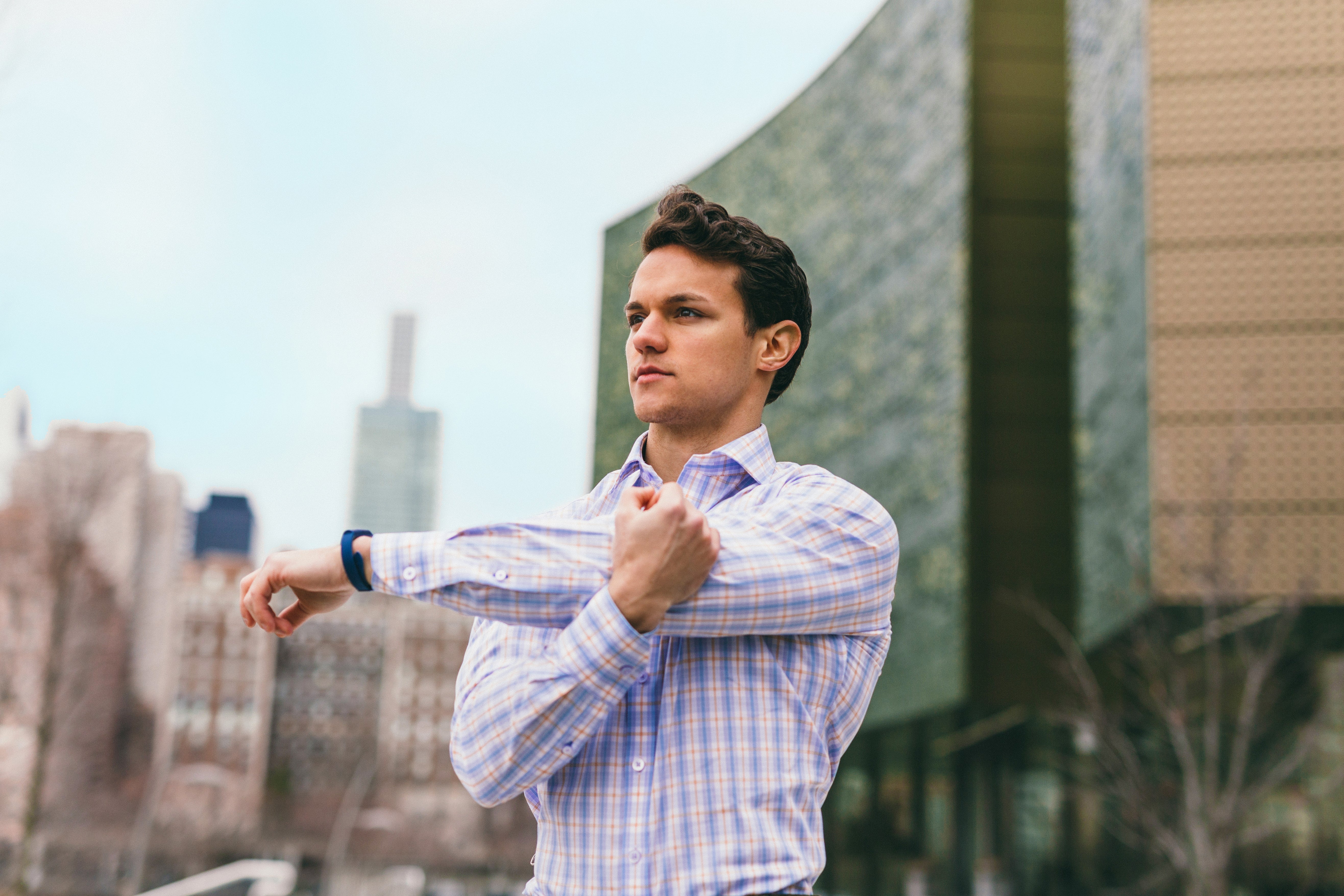“Performance” is the hottest word in shirting since “Non Iron”, and for good reason.
A shirt that capitalizes on the many recent breakthroughs in fabric technology without looking like it was actually made in a lab (no offense, lab guys) is a noteworthy development indeed.
Because if your hustle is already killing it 2020-style but your shirt game’s stuck in 1992, you’ve got problems, friend. Itchy, swampy, wrinkly problems.

Actual pic of your hustle already killing it 2020-style. Get it here.
Performance shirting aspires to solve those problems in a single garment: a shirt that looks like business attire, but feels like gym-wear. And when you consider the incredible marriage of form and function that already exists in so many other products, is it really too much to ask that our dress shirts get the same upgrade?
Not according to the shirting business. Within the last five years, performance dress shirting has exploded. Everyone and their mother makes a performance shirt now, and it can be easy to get lost in the buzzwords. Terms like “moisture-wicking,” “poly blend,” and “wrinkle resistant” are thrown around so much that you might think all performance dress shirts are the same.
But nothing could be further from the truth.
So to sort the true performers from the under-performers, let’s dive into what some of these terms actually mean.
MOISTURE-WICKING

By definition a moisture-wicking fabric is one that “wicks moisture,” i.e. absorbs moisture and moves it away from the skin and out through the fabric.
Why is that a good thing? Simple: the faster moisture evaporates through a fabric, the easier it is to keep your body cool and the fabric dry. No more back-swamp after a mid-afternoon Uber to your meeting across town. Great, right?
One problem: simply wicking moisture away from your skin is totally useless unless the fabric also helps evaporate that moisture. No evaporation means you’re just wearing one big sweat absorber. Ever work out in a 100% cotton T-shirt? That’s what absorption without evaporation feels like: like wearing a giant dishrag.
Unfortunately, this is a problem for a LOT of moisture-wicking fabrics. They can absorb moisture just fine, but can’t get rid of it. Yeah, you read that right: not all moisture-wicking fabrics actually get rid of the moisture they wick off your skin.
And a lot of those fabrics are sold as “performance” fabrics in things like, you guessed it, men’s shirting.
Sure, we could name the names of those *cough* other shirting companies whose shirts don’t actually function as advertised *cough,* but we once read in a 7-11 bathroom off the Jersey Turnpike that ‘snitches get stitches,’ so we’ll hold our tongues.
Instead, let’s talk about the one moisture-wicking fabric that actually does exactly what it’s supposed to do (which is why we created our Performance Shirts with it).

COOLMAX
Coolmax is the OG of moisture-wicking fabrics, developed back in 1986 to improve the breathability of athletic wear. To say it accomplished that goal is an understatement: fabric has never been the same.
So, how does Coolmax do it? The magic is in the design of the fibers themselves.







